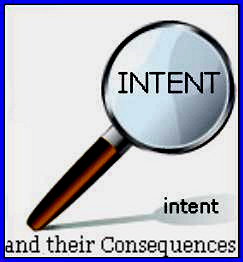Sections 58 and 59 of WESA are designed to allow the Courts the power of curing defects in wills and thus allow the will to become valid despite the technical defect, so as to give greater impact towards what the will maker intended.
These types of Court powers are called “Dispensation Powers” and estate practitioners in British Columbia will be primarily looking to other jurisdictions such as Manitoba and Australia, where the court have had such powers for several decades before B.C.
One of the leading cases to firstly examine is the Manitoba Court of Appeal case in George v. Daily ( 1997) 3 WWR 379 where the court examines as to what constitutes a testamentary instrument.
The will maker advised his accountant that he wanted to change his will, and the accountant subsequently wrote a letter to the lawyer for the new will maker containing the testator’s instructions.
The lawyer subsequently advised the will maker to obtain a certificate from a medical doctor confirming the testator’s mental competence
The testator subsequently died two months later without ever having signed a will.
The accountant applied for judicial advice and direction, and the court found that the letter disclosing the testamentary intention and ordering that the will being fully effective as the testator’s will under the Manitoba wills act.
The testator son however appealed that ruling successfully, arguing that the evidence did not establish that the letter disclosed testamentary intention .
The first portion of George v. Daily struggled with what limits, if any, should be placed on the powers of the Court and its powers to correct improperly executed wills and other such deficiencies and stated:
” There must be some limitations to the application of the dispensation power granted under s. 23. Surely, by ignoring or overlooking the qualifying words which the Commission had recommended, the Legislature did not intend that a document which “was not seen, or read, or written, or in some way authenticated, or adopted” by the deceased (the words of Powell J. in Estate of Springfield), or a document whose very existence the deceased was not aware of, could be admitted to probate on an application under s. 23. The Legislature could not have intended that the gratuitous comments of an elderly person to someone who has befriended him, and,
1997 CarswellMan 57, 143 D.L.R. (4th) 273, 15 E.T.R. (2d) 1, [1997] 3 W.W.R. 379, 139 W.A.C. 27, 115 Man. R. (2d) 27, 68 A.C.W.S. (3d) 1191
unknown to the person, recorded later in a document, might be admitted to probate after his/her death as his/her will.
57 If that were so, the person might have a will without knowing of its existence. He/she would not know that his/her casual comments (or the inadvertent remark or the one made in jest, of which Dean Gulliver and Ms Tilson had written in their paper), which might not have survived the moment of their making, were written down later; and could be presented to the court after his/her death for probate pursuant to s. 23 as a document embodying his/her testamentary intentions. And even if the comments expressed his/her intention at the moment as to the disposition of property on death, he/she would be unaware that he/she would have to revoke his/her statement by a document in writing evidencing his/her animus revocandi in order to give effect to his/her true and enduring intention – that his/her property devolve on his/her children and grandchildren.
58 As discussed above, the purpose of remedial provisions is to overcome the hardship and injustice – the consequences of the triumph of form over intent – which have often followed the literal application of the formal requirements found in will statutes. The Commission wrote in its 1980 report that the purpose of the remedial provision it recommended was to ensure that:
… the finding of a formal or execution defect would not lead to automatic invalidation of the will. Rather the proponents of the document would be given the opportunity to establish that the defect is a harmless one. This would entail satisfying the court that, despite the defect, the document represents the intent of the testator and satisfies the purposes of “The Wills Act”.
59 The Commission did not recommend that the requirements and formalities of the Act be revoked, or that testamentary law be profoundly altered. And, in my view, the enactment of s. 23 did not do so. The section must be interpreted and applied in the context of all of the provisions of the Act and the jurisprudence which has developed over the centuries.
60 It remains a fundamental and universal proposition “that nothing can receive probate which was not intended to be a testamentary act by the testator“: per Lord Selborne L.C. in Whyte v. Pollok (1882). 7 App. Cas. 400 at p. 405. In Bailey’s The Law of Wills, (7th ed. 1973, Pitman Publishing) the principle is stated (at pp. 65-6): “No will is entitled to probate unless the testator executed it with the intention that it should take effect as his will.” (It is not necessary to review cases such as Milnes v. Foden (1890), 15 P. 105, in which instruments have been admitted to probate even though the deceased was unaware that he/she had performed a testamentary act. The principle remains the same: the intention that the instrument record the final (but revocable) wishes of the deceased as to the disposal of his/her property after death.)
61 Section 23 can be invoked to give effect to the testamentary intentions of a deceased in the face of imperfect compliance, even non-compliance, with the formalities of the Act. Section 23 cannot, however, make a will out of a document which was never intended by the deceased to have testamentary effect. In Re Balfour Estate (1990), 85 Sask. R. 183 (Q.B.), Gerein J. explained the principle:
Yet, it must be kept in mind that the section’s [s. 35.1 of the Saskatchewan Wills Act] purpose is to overcome non-compliance with formal requirements. It does not empower the Court to render a document testamentary in
©2014 Thomson Reuters. No Claim to Orig. Govt. Works
Page 18
1997 CarswellMan 57, 143 D.L.R. (4th) 273, 15 E.T.R. (2d) 1, [1997] 3 W.W.R. 379, 139 W.A.C. 27, 115 Man. R. (2d)27,68A.C.W.S.(3d)1191
nature when it is otherwise not so. In the instant case, the document does not manifest a true testamentary intention and therefore does not meet the threshold requirement of the section.
62 Not every expression made by a person, whether made orally or in writing, respecting the disposition of his/her property on death embodies his/her testamentary intentions. The law reports are filled with cases in which probate of holographic instruments has been refused because they did not show a present intention to dispose of property on death. Bennett v. Toronto General Trusts Corp., [1958] S.C.R. 392, was such a case.
63 In Bennett, the deceased’s letter to her lawyer, a holographic document, contained details of “how [she] would like [her] will to be made out.” Thereafter, until her death three and one-half years later, she met her lawyer on many occasions, both professionally and socially, but a formal will was never prepared. The court concluded that the letter was not written animo testandi; that it did not “record a deliberate or fixed and final expression of intention as to the disposal of property on death.” The court’s conclusion was supported by its findings that the deceased “did not want that letter to operate as a will;” and that “by her letter, she is committing to [her lawyer] both the finality of her decisions, if not of her deliberations, and that of the form in which they should eventually be expressed in a regular will, the preparation of which is entrusted to [her lawyer] himself.”
64 In my view, in a similar fact situation today, the result would be the same, notwithstanding the enactment of s. 23. While the deceased’s letter to her lawyer detailed the way in which the she would like her will to be made out, the letter did not embody her testamentary intentions. Section 23 cannot be invoked to overcome the absence of that essential requirement of a valid will.
65 The term “testamentary intention” means much more than a person’s expression of how he would like his/her property to be disposed of after death. The essential quality of the term is that there must be a deliberate or fixed and final expression of intention as to the disposal of his/her property on death: Bennett; Molinary v. Winfrey (1960), [1961] S.C.R. 91; and Canada Permanent Trust Co. v. Bowman, [1962] S.C.R. 711.
66 In my opinion, these are the principles which must be applied in the determination under s. 23 as to whether or not a document or writing embodies the testamentary intentions of the deceased. Whether it is the deceased’s own instrument or the notes or writing made by a third-party, the crucial question to be answered is whether the document expresses the animus testandi of the deceased – a deliberate or fixed and final expression of intention as to the disposal of his/her property on death.
67 At the very least, a third-party document would have to be one that had been made at the request of the deceased, or with his/her knowledge; and, in any event, with his/her awareness that the document recorded the deliberate and final expression of his/her wishes as to the disposition of his/her property on death. Another of the principles which have survived the enactment of s. 23 is that the court must be satisfied that the deceased knew and approved of the contents of the document which is presented for probate. Guardhouse v. Blackburn (1866), L.R. 1 P. & D. 109 (Prob.), which has not been overruled by the enactment of s. 23, is authority for that principle. Although this has been considered as a question of evidence rather than of substantive law, the rule takes on a heightened significance when the document is a third-party one.




